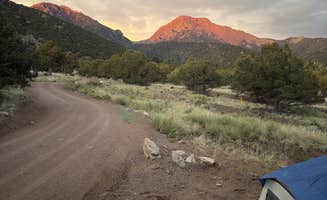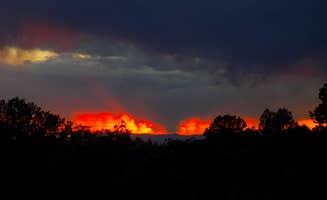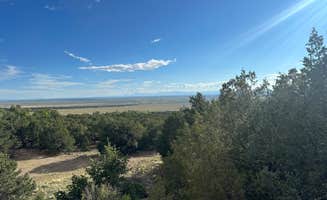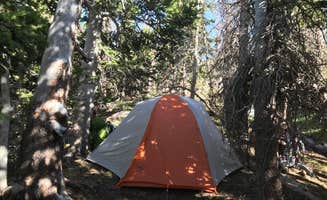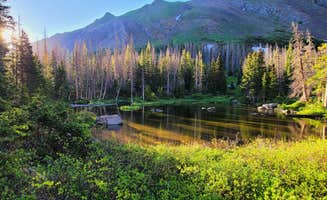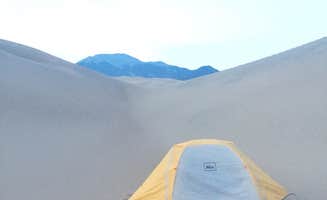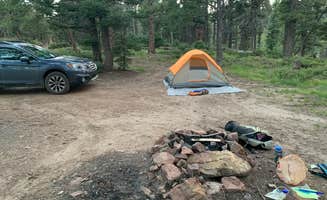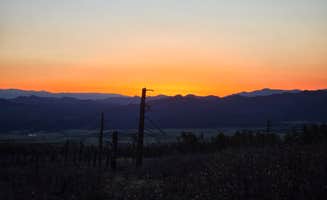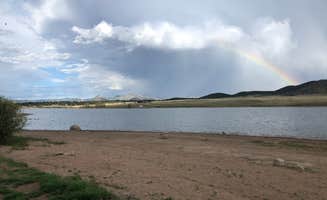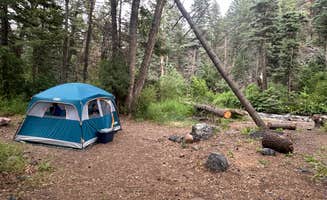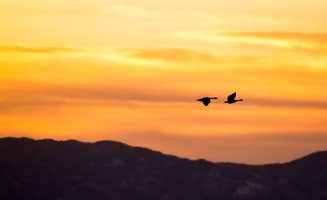Dispersed camping areas near Crestone, Colorado provide numerous free camping opportunities on public lands. Most sites require high-clearance vehicles to navigate rough access roads, with conditions becoming more difficult after rain. Summer temperatures typically range between 45-85°F, with frequent afternoon thunderstorms from July through September creating muddy conditions on forest roads.
What to do
Hiking to alpine lakes: Access excellent high-altitude hiking from the Cotton Creek Trailhead, where trails lead to alpine lakes and meadows. "The road is very rocky & very rough, so you'll want to have decent clearance and be prepared to take it slow," notes Angela E., who adds that hikers are rewarded with exceptional night sky viewing.
Visit sacred sites: Crestone sits near several spiritual centers and retreats within walking distance of some camping areas. "The area is very interesting. Crestone is a tiny town with just about anything you might want within a walk from where I parked," reports Mark P. from Crestone Needle Trail.
Four-wheel drive exploration: Navigate the challenging Medano Pass Primitive Road which connects the Great Sand Dunes to Highway 69. "Definitely need 4 wheel drive and decently high clearance. I only saw Jeeps, 4 runners, and trucks. Rocky and steep at parts, it was pretty damn rough," advises Paul H.
What campers like
Mountain wildlife encounters: Campers report regular wildlife sightings in the area. At Dispersed Sand Area 1, Jake M. notes it's "Great camping for some 14ers. Plenty of dispersed spots available," making it an excellent basecamp for mountaineering.
Solitude and spacing: Sites tend to offer good separation from other campers. "The spots are spread out enough to where I did not see or hear a soul while camping 2 nights," reports a camper. Nora S. confirms the privacy: "Quiet and secluded so can't complain. Right down from the trailhead."
Stargazing opportunities: The area's dark skies provide exceptional astronomical viewing. At the Cotton Creek Trailhead, Angela E. exclaims, "I've never seen so many stars!" Similarly, at Lake Deweese, Jessica W. notes, "Summer nights during the new moon is a great time to visit. You can see the Milky Way."
What you should know
Seasonal mosquito preparation: Insect activity becomes intense during summer months. Cooper P. warns about Dispersed Sand Area 1: "Great spots available- plenty of room for multiple campsites along the road. Great views! - BUT mosquitoes were absolutely awful so be prepared (mid July)."
Vehicle requirements: Many access roads demand 4WD capability and high clearance. For Wild Cherry Creek Trailhead, one reviewer advises: "Road in is rougher towards the end but definitely doable in any SUV."
Weather patterns: Afternoon rain showers are common in summer months. Come prepared for rapid weather changes and temperature swings between day and night, with overnight temperatures dropping below 50°F even in summer.
Water access: No potable water exists at dispersed sites. The nearest reliable water source is often the Great Sand Dunes National Park visitor center or in Crestone itself.
Tips for camping with families
Choose more accessible sites: For families with children, select campsites closer to main roads. "Easy drive, can get a little bumpy but nothing an all wheel drive can't handle," notes Nora S. about Dispersed Sand Area 1, making it suitable for family vehicles.
Creek-side options: Several camping areas feature creek access for children to explore. At Lake Deweese state wildlife area, Wayne H. recommends: "We decided on a non wooded area on the north side of the lake for a great view of the mountain range. The views of the aspens turning were spectacular."
Safety considerations: Be aware of wildlife activity, especially in early mornings and evenings. Keep food secured properly and maintain appropriate distance from any wildlife encountered.
Fire restrictions: Check current fire regulations before travel, as restrictions are common during dry periods. When allowed, use only established fire rings found at some sites.
Tips from RVers
Size limitations: Most dispersed areas can accommodate smaller RVs and trailers, but larger rigs face significant challenges. At the Sacred White Shell Mountain area, Meandering Life advises: "I think any size rig would be fine to travel to the first three camping areas. Each camping area could probably fit 3-5 rigs and some tenters without being on top of each other."
Leveling requirements: Prepare with leveling blocks as most sites are not naturally level. "Most everyone else needed blocks, but they didn't seem to have much problem leveling," notes an experienced RVer about nearby dispersed areas.
Road condition awareness: Many access roads deteriorate significantly after recent precipitation. After rain, allow extra time for roads to dry or seek alternative camping locations with more stable access.


